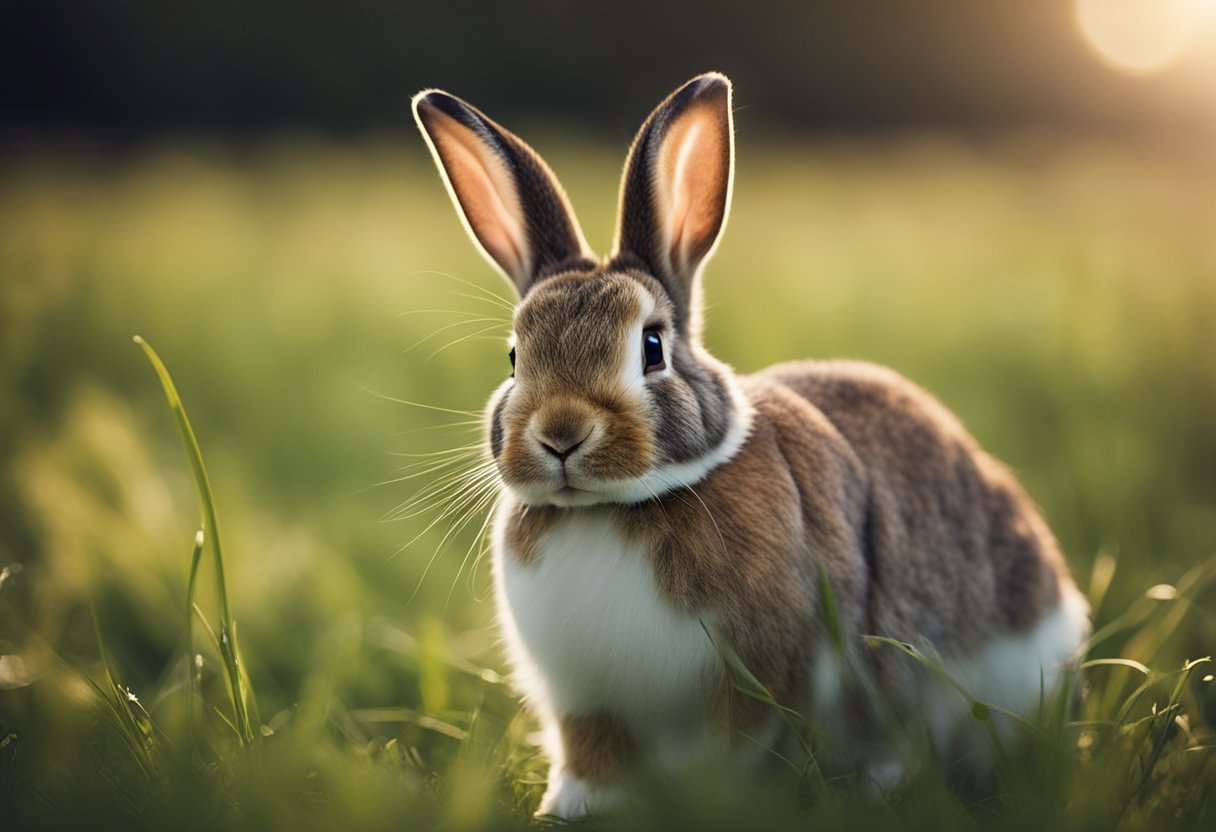Can a Rabbit See Behind Him? Understanding Rabbit Vision and Awareness
Rabbits are fascinating creatures with unique vision abilities that help them stay safe in the wild. They can see almost 360 degrees around them, allowing them to detect danger from behind without turning their heads. This remarkable vision is a key adaptation that enhances their survival as prey animals.

You might be curious about how this works. Rabbits have eyes positioned on the sides of their heads, giving them an extensive field of view. While they can see most areas around them, there are still some small blind spots directly in front and behind, but they manage well with their keen awareness.
Understanding the way rabbits see can help you care for them better. Whether you’re a new rabbit owner or just intrigued by these animals, exploring their vision capabilities reveals much about their behavior and needs.
Key Takeaways
- Rabbits have a nearly complete 360-degree field of vision.
- Their vision helps them avoid predators effectively.
- Knowing how rabbits see can improve their care and understanding.
Rabbit Vision Capabilities

Rabbits possess unique eye features that give them remarkable vision abilities. Understanding their field of view and blind spots can help you better interact with these animals.
Field of View
Rabbits have a nearly 360-degree field of view. This wide range comes from their eyes being positioned on the sides of their heads. Because of this placement, they can see almost everything around them without turning their heads.
They have excellent vision in low light, making them adept at spotting predators during dawn and dusk. While they do see some colors, they are red-green colorblind and rely more on movement and patterns than on color to identify objects. This ability helps them stay safe in the wild.
Blind Spots
Despite their impressive field of view, rabbits do have blind spots. There are areas directly in front of and behind them where their vision is limited. This means they cannot see an object that is directly in their line of sight without turning their heads or moving their bodies.
To ensure their safety, it is best to approach a rabbit from the side. In larger breeds, these blind spots may be more pronounced due to their size and body shape. Knowing this can help you avoid startling your rabbit when you interact with it.
Adaptations for Survival

Rabbits have developed specific traits that help them survive in their natural environments. These adaptations are crucial for their awareness of predators and their ability to escape threats quickly. Understanding these traits can enhance your appreciation for these agile animals.
Predator Awareness
Rabbits are prey animals, which means they are constantly at risk from predators. To stay safe, they have unique adaptations for awareness.
- Wide Field of Vision: Rabbits’ eyes are located on the sides of their heads. This design allows them to see almost 360 degrees around them. They can detect predators without needing to turn their heads.
- Heightened Senses: Their sense of smell and hearing are finely tuned, helping them detect danger from far away. This keen awareness enables them to react quickly.
- Body Language: Rabbits also use body signals to communicate with one another. For example, a sudden freeze can alert others to potential danger nearby.
Locomotion and Escape
When a rabbit perceives a threat, its ability to move quickly is vital.
- Fast Sprinting: Rabbits can reach speeds up to 35 miles per hour. This speed helps them evade predators in open areas.
- Sharp Turns: Along with speed, rabbits can make quick, sharp turns. This agility can confuse predators and increase their chances of escape.
- Small Spaces: They are skilled at squeezing into tight spots, which provides an escape route from larger predators.
These adaptations have allowed rabbits to thrive across various habitats while effectively avoiding many threats.
Resources

To understand rabbit vision better, here are some useful resources:
- Rabbit Vision Basics: Learn how rabbits see their surroundings and their nearly 360-degree field of vision. Check out this article on Can Rabbits See Behind Themselves?.
- Blind Spots: Discover the small blind spot directly behind rabbits. This information can be found in Can Rabbits See Behind Themselves Without Turning Their Heads?.
- Rabbit Eye Position: Understanding why rabbits can see around them is key. For further details, refer to Rabbit Eyesight.
- Vision Characteristics: This resource discusses how rabbits see in different light conditions: How Good Can Rabbits See?.
- Practical Tips: If you want to learn how to approach your rabbit without startling it, read more at Can Rabbits See Behind Them Without Turning Their Heads?.
These links provide detailed insights into how rabbits perceive their environment and can enhance your understanding of their vision capabilities.
Frequently Asked Questions

Understanding how rabbits see can help you better care for them. Their vision is adapted to their environment, providing them with unique capabilities. Here are some common questions about rabbit vision and perception.
How do rabbits perceive their environment?
Rabbits have a wide field of vision, almost 360 degrees. Their eyes are positioned on the sides of their heads, allowing them to detect movement and see potential predators easily. They have a small blind spot in front of their nose.
What is the range of vision for a rabbit?
Rabbits can see objects clearly at distances of about 20 to 30 feet. While they are good at noticing movement, they don’t focus well on distant objects. Their vision is more tuned to spotting dangers nearby.
Are rabbits capable of seeing at night, and how does darkness affect their vision?
Rabbits have good night vision and are most active during twilight. They can see better in low light than in complete darkness. However, they struggle to see in very bright light or total darkness.
How do colors appear to rabbits, and can they distinguish them?
Rabbits have two types of color receptors, which limits their ability to see colors compared to humans. They can distinguish some colors but not as many as you can. Their vision is more about detecting motion than color detail.
How do bunnies interact with humans from their visual perspective?
From a rabbit’s viewpoint, humans appear quite large. Your face can make them feel nervous if they see it too closely. Approaching them from the side can help them feel more comfortable.
Do rabbits have the ability to navigate back to a familiar place?
Rabbits are good at remembering familiar surroundings. They use their keen sense of smell and memory to find their way back home. If they feel safe, they can easily navigate back to a familiar burrow or area.

